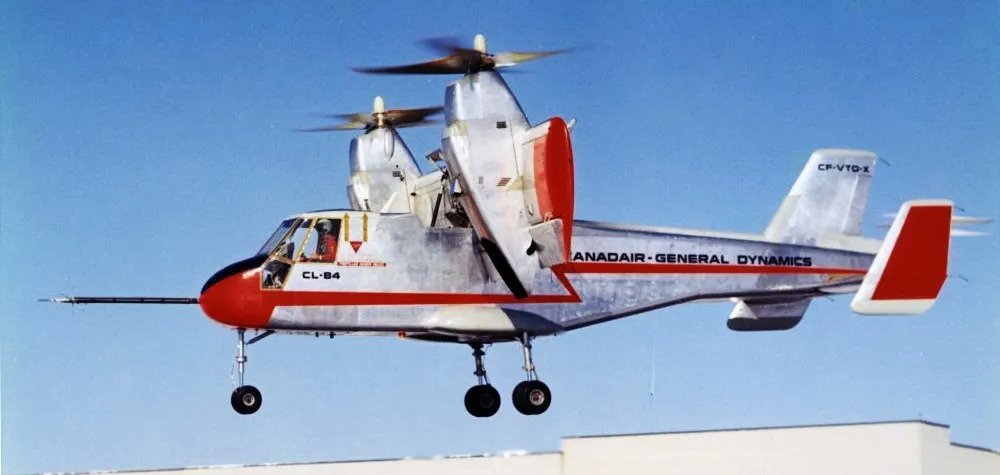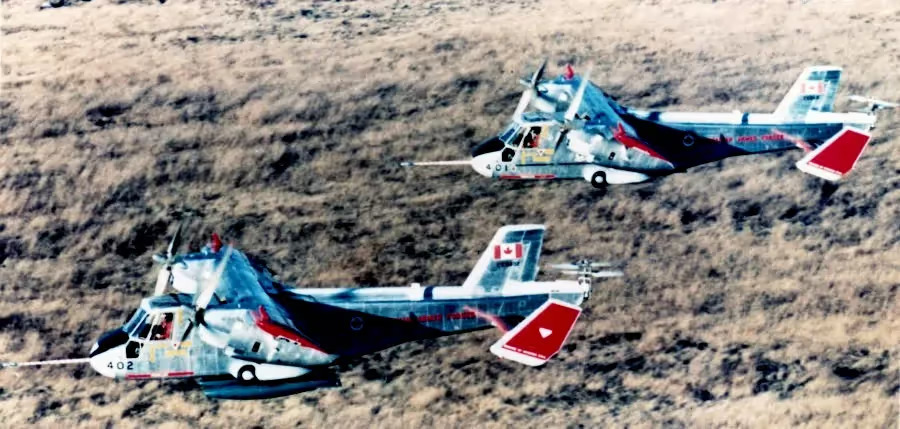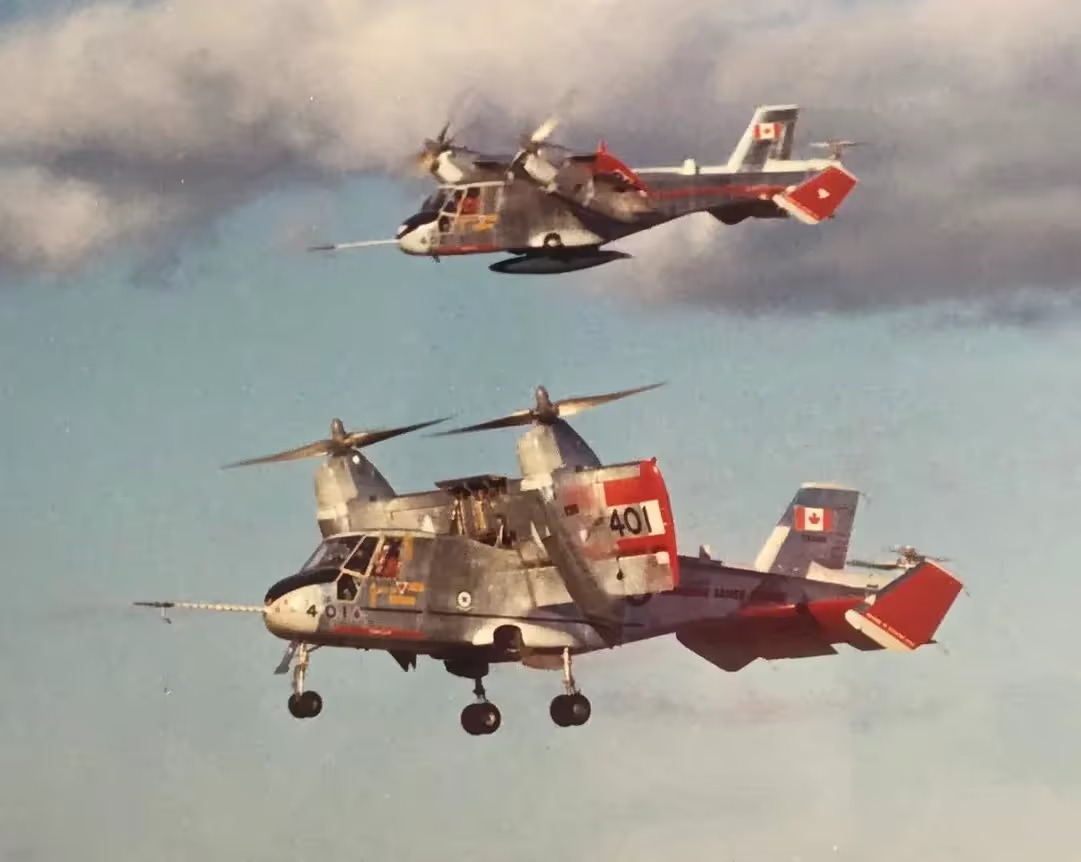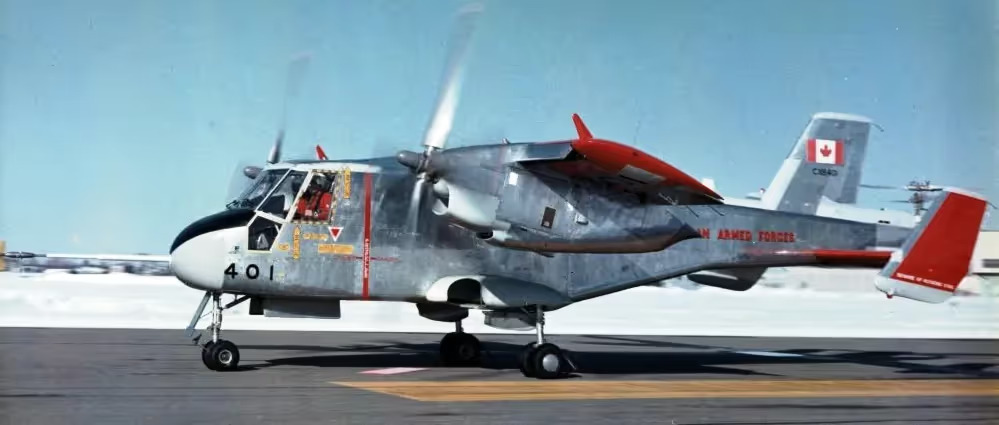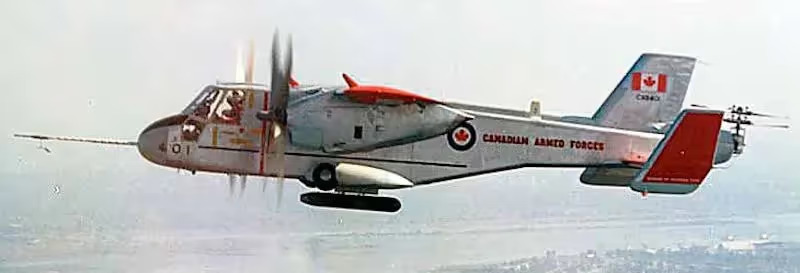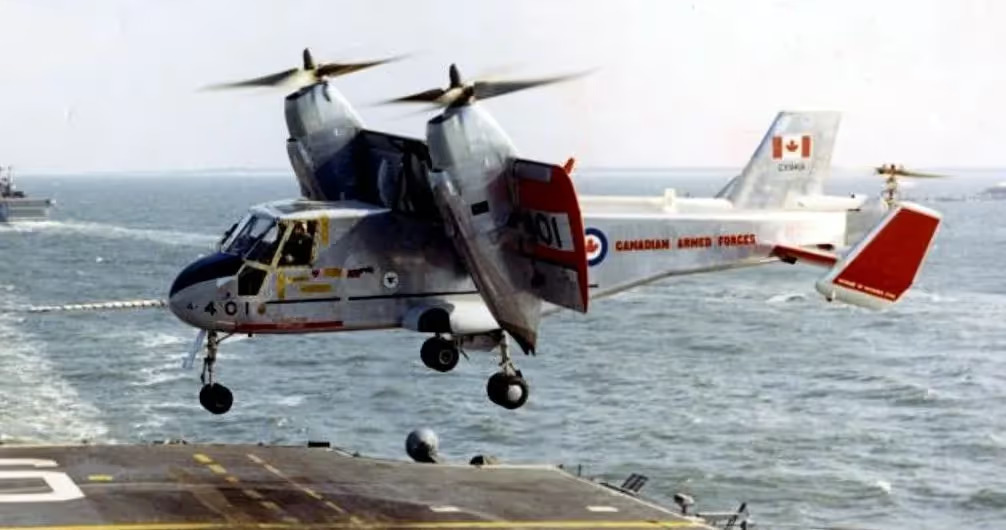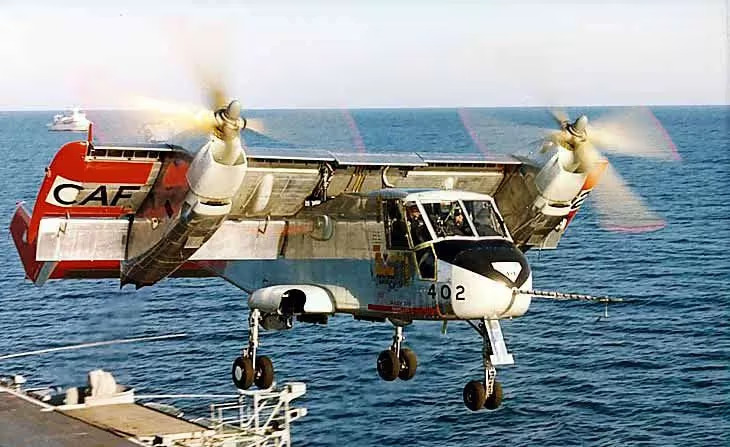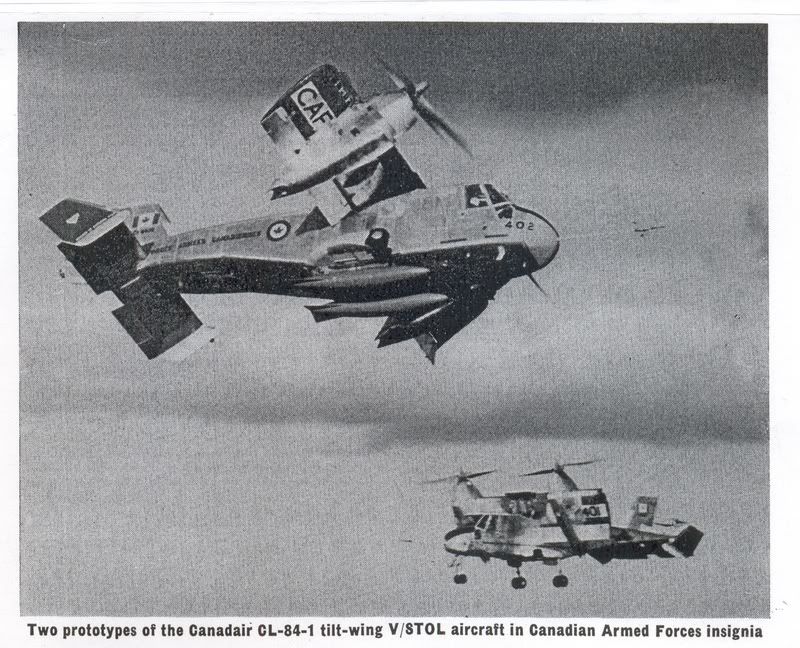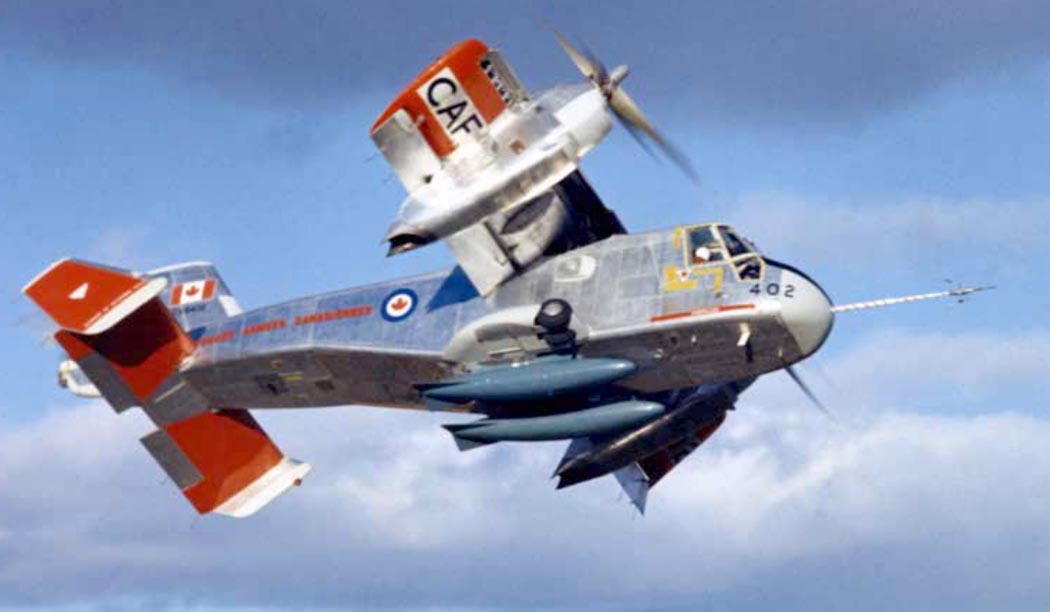- Yes
- No
Hello, today I’m suggesting something a little different, as it is fully unique. Is it a plane? Helicopter?, It’s both and neither; it’s the tilt-wing, Dynavert, a Canadian-built V/STOL.
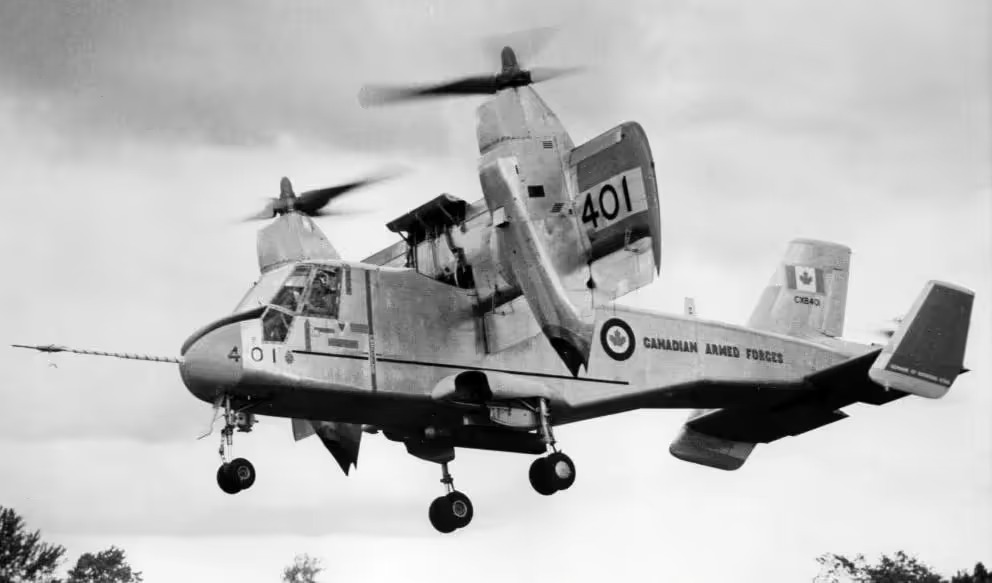
History:
The CL-84 would have its origins in an older project, the US Army Study Requirements ASR3-60, in the 1950s. In order to compete in the real competition, Canadair would look at five designs to study, under the CL-62 project. Well, there are a number of different layouts between the designs being looked at, the ones that made it to the end of the study were two tilt-wing designs, one with 4 propellers and one with 2. The 4 propeller design would be written off due to the strain it would put on the wing, as it would bend it more than it should. The two-propeller one would be far more successful; however, it still wouldn’t be selected. Canadair would join McDonnell Aircraft Corporation in 1961 in a different attempt to get a V/STOL aircraft accepted by the US, this however didn’t work out. There would be two other designs, namely the CL-73 and CL-74, that would lead to early designs for the CL-84. By 1959, the designs that showed the most promise would be found, and Canadair would go with that. Well, the early design for the CL-84 would share much more with the CL-73 over the final design, as it was originally meant to replace the Cessna L-19 and Bell H-13 in their roles.
On January 31st of 1963, the Canadian government would sponsor a contract to help develop CL-84. The project was being promoted as an aircraft for emergency transport, artillery fire control, ground support and evacuation for military roles, along with as a bush plane for the Arctic and as a short-haul commuter aircraft for urban centers. Despite being approved to have a prototype built, it would soon be cancelled and would have to go back to the drawing board as the Canadian Government would review their operational needs. The second and final design would be the culmination of all the previous research and design studies. It would be primarily tailored to the US military market and was meant to fill many roles, from the ones the first ones were meant to fill to new ones, like ASW and armed helicopter escort, or close air support. On top of those, Canadair had a number of commercial roles they pictured it could fill.
In August of 1963, a design was settled on, and a prototype was produced by the Canadair plant in Montreal. It would take two years of extensive testing and troubleshooting before it could have its first flight on the 7th of May 1965. It would take a year after that before it would have the transition from hover to forward flight and back would be tested. The CL-84 would have a series of cams and drive shafts, which would allow reliable and easy transfer of power between the engines, which would let both propellers maintain operation in case of a failure of a single engine. For the time, it had an ingenious control structure that linked the propeller pitch angle, elevators, rudder, ailerons, and engine power together in what could be nearly called a fully conventional cockpit, the only difference being the lever that controlled the angle of the wing.
Over 300 hours of testing, and over more them 300 flights would happen before any kind of accident would happen. Where in June of 1966, it would take a landing too hard, which would collapse the landing gear and break the blades of the propeller, this damage however, was minimal, and the aircraft would be repaired and back flying again in no time. This wouldn’t be until after it was flown by a number of pilots from the Canadian Armed Forces, Royal Air Force, US Navy and NASA, due to its conventional-style cockpit whose controls meant no special training was needed. Sadly, the first prototype would be lost in September of 1967, when a failure of the pitch angle controller caused it to crash, this was, however, without casualty as both pilots were able to eject to safety. Following this, 3 more Dynaverts would be manufactured by Canadair in 1969. This was to help with sales and to incorporate possible improvements found with the first prototype. This prototype would fly until a gearbox failure in 1973, which was rumoured to have happened due to US Navy pilots trying to set an unauthorized power climb record, which overly stressed the system. The third prototype would have testing moved to Maryland in 1973, where its test flights demonstrated its full range of capabilities. It was also tested with carrier takeoffs and landings. The second and third prototypes would have two hard points for fuel tanks and weapons. Well, the fourth prototype would never fly and end up straight in a museum.
Specs:
General characteristics
- Crew: 2
- Capacity: 12 passengers
- Length: 47 ft 3.5 in (14.415 m)
- Wingspan: 34 ft 4 in (10.46 m)
- Height: 14 ft 3 in (4.34 m)
- Wing area: 233.3 sq ft (21.67 m2)
- Airfoil: NACA 633-418
- Empty weight: 8,417 lb (3,818 kg)
- Max takeoff weight: 14,500 lb (6,577 kg) (STOL), 12,600 lb (5,710 kg) (VTOL)
- Maximum width over propeller tips: 34 ft 8 in (10.56 m)
- Maximum height over propellers during wing tilt: 17 ft 1½ in (5.22 m)
- Powerplant: 2 × Lycoming T53 shaft-turbines, 1,500 shp (1,100 kW) each
- Main rotor diameter: 14 ft 0 in (4.27 m)
- Propellers: 4-bladed, 14 ft 0 in (4.27 m) diameter
Performance
- Maximum speed: 321 mph (517 km/h, 279 kn)
- Cruise speed: 301 mph (484 km/h, 262 kn)
- Never exceed speed: 415 mph (668 km/h, 361 kn)
- Range: 421 mi (678 km, 366 nmi) with max wing fuel, VTOL, & 10% reserves
- Rate of climb: 4,200 ft/min (21 m/s)
- Disk loading: 195 kg/m2
- Power loading: 1.35 kg/kW
Amrament
- Ordnance: 2 x underbelly pylons
- Gunpods: 2 x 7.62 mm SUU-11A/A gunpods
- Bombs: 2 x
- Rockets: 2 x
- Torpedoes: 2 x ASW torpedoes
- Other: 2 x 379 L drop tanks
Sources
Canadair's VTOL projects before the CL-84 | Secret Projects Forum
https://youtu.be/q6SxyIoSvMM?si=ejMz-kDxTOp8Pap6
Canadair CL-84 Dynavert - Wikipedia
https://www.forposterityssake.ca/RCN-DOCS/RCND0856.pdf
https://youtu.be/YqKOJElAEAQ?si=MKl3PgE6an-tPXA0
Canadair CL-84 Dynavert - Royal Aviation Museum of Western Canada
Canadair CL-84-1 Dynavert - Canada Aviation and Space Museum
Avialogs: Aviation Library - CL-84 Dynavert
Canadian Warplanes 7: Canadair CL-84 Dynavert
The Canadair CL-84 Dynavert – Jim Chung's Ramblings
